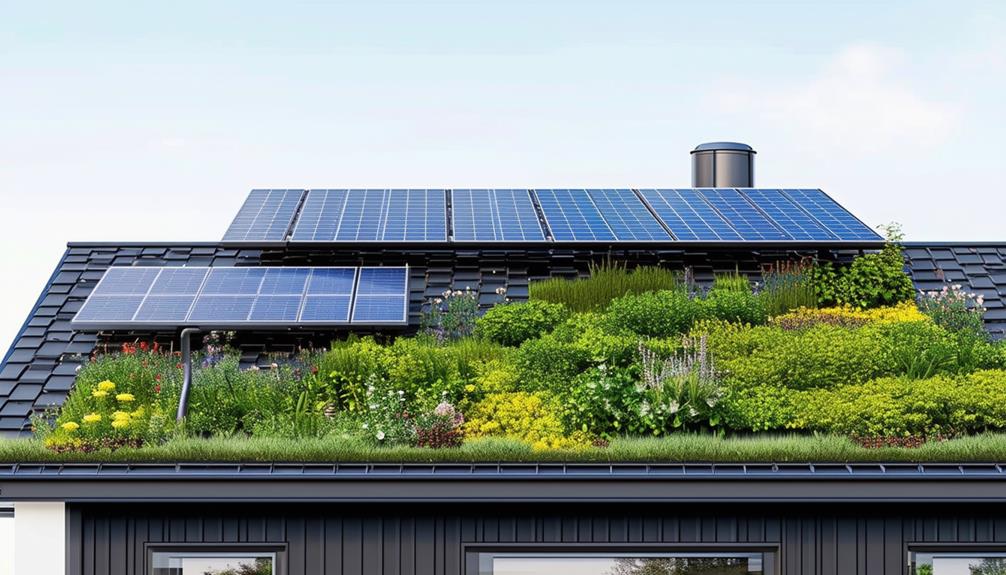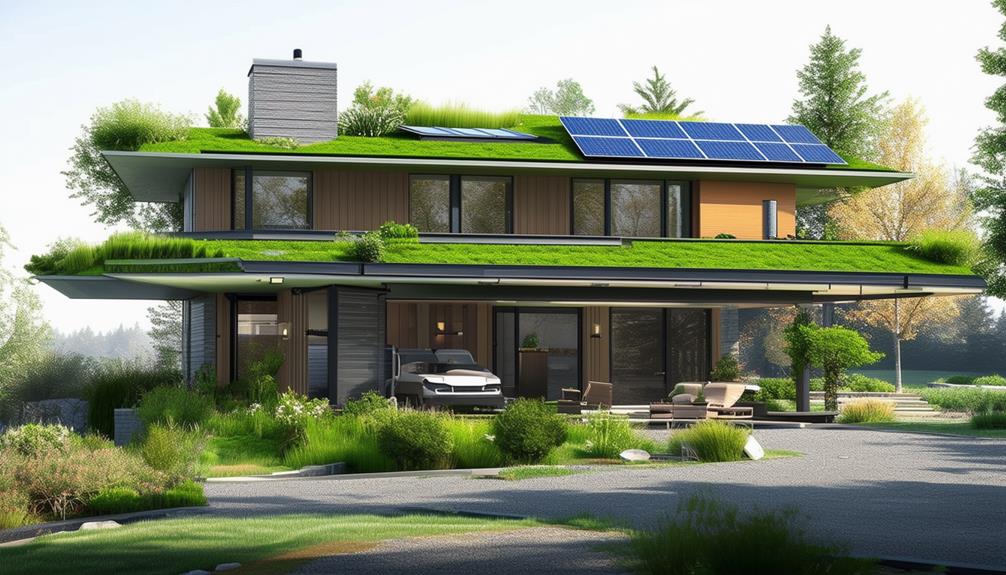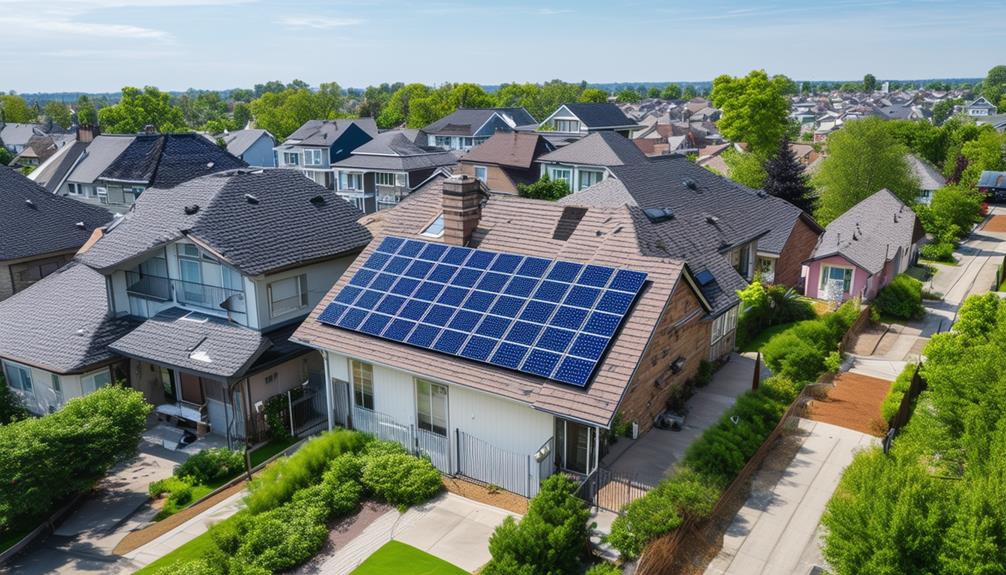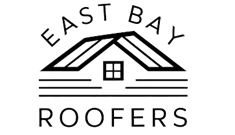Explore the latest residential roofing trends: Opt for sustainable options like metal roofs with eco-friendly properties. Embrace energy-efficient materials like solar panels and cool roof technology for reduced bills. Delve into innovative designs for enhanced curb appeal. Integrate smart technology systems for convenience and longevity. Address climate change impacts with green roofs and proper insulation. Discover how these trends shape the future of roofing practices.
Sustainable Roofing Options

When considering sustainable roofing options for your home, metal roofs are an excellent choice due to their longevity and eco-friendly properties. Green roofing solutions are becoming increasingly popular as homeowners seek eco-friendly materials that also offer durability. Metal roofs are known for their sustainable roof designs that have a minimal environmental impact compared to traditional asphalt shingles. These roofs are often made from recycled materials and are fully recyclable at the end of their long lifespan, reducing waste and promoting a circular economy.
Opting for metal roofs not only benefits the environment but also provides numerous advantages for homeowners. They are resistant to fire, mildew, insects, and rot, making them a low-maintenance and cost-effective choice in the long run. Additionally, metal roofs are energy-efficient, reflecting sunlight and reducing heat absorption, which can lead to lower cooling costs during hot seasons. By choosing metal roofs, you are not only investing in a sustainable roofing solution but also in the future of your home and the planet.
Energy-Efficient Materials
When considering energy-efficient materials for your residential roofing, two key points stand out: solar panel integration and cool roof technology. Solar panels offer a sustainable way to harness the sun's energy and reduce your electricity bills. Cool roof technology reflects sunlight and heat away from your home, keeping indoor temperatures lower and decreasing the need for excessive air conditioning.
Solar Panel Integration
Solar panel integration in residential roofing has become increasingly popular as homeowners seek to incorporate energy-efficient materials into their homes. Harnessing solar energy through rooftop installations not only helps reduce electricity bills but also contributes to a sustainable environment. When considering solar panel integration, it is crucial to evaluate your roof's orientation, shading, and structural integrity to guarantee maximum energy production.
Rooftop installations for solar panels involve mounting photovoltaic modules securely on the roof to capture sunlight and convert it into electricity. This process requires professional expertise to assess the roof's load-bearing capacity and ensure proper installation for efficiency and safety.
Cool Roof Technology
Incorporating cool roof technology, which comprises energy-efficient materials, can greatly enhance the sustainability and energy efficiency of your residential property. By utilizing reflective surfaces in cool roof materials, your home can effectively combat the heat island effect prevalent in urban areas. These specially designed roofs reflect more sunlight and absorb less heat than traditional roofing materials, keeping your home cooler and reducing the need for excessive air conditioning.
Cool roof technology helps lower indoor temperatures, leading to decreased energy consumption and cost savings on cooling bills. Additionally, by reducing the heat island effect in your neighborhood, you contribute to a more sustainable and environmentally friendly community.
When selecting cool roof materials, consider factors such as solar reflectance and thermal emittance to ensure maximum energy efficiency. Investing in cool roof technology not only benefits your household but also supports broader efforts to combat climate change and promote greener living practices.
Innovative Roofing Designs

To stay ahead in the roofing industry, embracing innovative designs is crucial for residential properties. Creative aesthetics and the use of unconventional materials are becoming increasingly popular among homeowners looking to make a statement with their rooftops. Incorporating unique shapes, textures, and colors can transform a traditional roof into a work of art that enhances the overall curb appeal of a home.
Urban rooftop gardens are a growing trend in modern roofing designs. These green spaces not only provide a tranquil retreat in the midst of a bustling city but also offer environmental benefits such as improved air quality and insulation. Integrating vegetation into the roof design requires thorough planning to guarantee proper drainage and structural support.
In addition to green roofs, modern designs are pushing the boundaries of what is possible with residential roofing. From asymmetrical shapes to bold geometric patterns, homeowners are opting for roofs that stand out from the conventional sloped styles. This shift towards innovative roofing designs reflects a desire for homes to be both functional and visually striking in today's architectural landscape.
Smart Technology Integration
Integrating smart technology into residential roofing systems enhances convenience and efficiency for homeowners seeking modern solutions. By incorporating remote monitoring and automated maintenance features, smart roofing systems provide a level of control and oversight that was previously unimaginable. With these advancements, homeowners can remotely monitor the condition of their roofs, receive real-time alerts about potential issues, and even schedule automated maintenance tasks.
Moreover, smart technology integration guarantees that residential roofs are constructed using weather-resistant and durable materials. These materials are designed to withstand the elements, offering increased longevity and reduced maintenance requirements. By combining smart technology with these robust materials, homeowners can enjoy peace of mind knowing that their roofs are not only technologically advanced but also built to last.
Impact of Climate Change

The changing climate significantly impacts residential roofing systems, necessitating careful consideration of materials and design to guarantee durability and longevity. As extreme weather events become more frequent, it is vital to adapt roofing practices to withstand these challenges effectively. Green roofs, with their environmentally friendly design, are gaining popularity as a sustainable solution that mitigates the impact of climate change on residential structures.
- Green Roofs: Implementing green roofs can help regulate indoor temperature, reduce energy consumption, and improve stormwater management, enhancing the resilience of residential roofs against climate change effects.
- Increased Severe Weather: With the rise in extreme weather conditions such as hurricanes, heavy rain, and strong winds, roofing materials need to be selected and installed to withstand these challenges and minimize damage.
- Long-Term Durability: Investing in high-quality roofing materials and proper installation techniques is essential to secure the longevity and performance of residential roofs under the changing climate conditions.
Roofing Maintenance Strategies
Given the impact of climate change on residential roofing systems, effective maintenance strategies are essential to ensuring the longevity and performance of your roof. Regular roof inspections play an important role in identifying potential issues before they escalate into costly problems. It is advisable to schedule professional roof inspections at least once a year, ideally in the spring or fall, to assess the overall condition of your roof and address any issues promptly.
In addition to roof inspections, implementing preventative measures can greatly extend the lifespan of your roof. Clearing debris such as leaves, branches, and dirt from your roof and gutters can prevent water accumulation and potential water damage. Checking for loose or damaged shingles and replacing them promptly can help maintain the integrity of your roof. Moreover, ensuring proper attic ventilation and insulation can help regulate temperature fluctuations, reducing the strain on your roof.
Frequently Asked Questions
What Are the Most Common Residential Roofing Materials?
When considering residential roofing materials, the most common options include asphalt shingles, metal roofing, clay tiles, and wood shakes. Each material has its benefits and drawbacks when it comes to longevity, durability, and aesthetics. Asphalt shingles are popular due to their cost-effectiveness, while metal roofing offers excellent longevity. Clay tiles and wood shakes provide a more traditional and upscale look but come at a higher cost. Consider these factors when selecting the best roofing material for your home.
How Can I Choose the Right Color for My Roof?
When selecting the right color for your roof, consider roof color psychology to evoke specific emotions. Lighter tones like white or beige can create a sense of spaciousness and airiness, while darker shades like charcoal or brown provide a cozy feel. Keep in mind current roofing material trends; for example, metal roofs often pair well with cool tones like blues and grays. Experiment with color samples to find the perfect match for your home's aesthetic.
Are There Any Government Incentives for Eco-Friendly Roofs?
Yes, there are government incentives available for eco-friendly roofs. Installing environmentally friendly roofs not only benefits the environment but also offers financial advantages through various incentive programs. These incentives are put in place to promote sustainable practices and help homeowners contribute to a greener future. By opting for eco-friendly roofing solutions, you can not only reduce your environmental footprint but also potentially save on costs through governmental support.
Can I Install Solar Panels on My Existing Roof?
Yes, you can install solar panels on your existing roof. However, before proceeding, consider the importance of your roof's durability to support the added weight of the solar panels. It's vital to verify that your roof is structurally sound and can withstand the installation process. Consulting with a professional roofing contractor can help assess your roof's condition and determine the best approach for successful solar panel installation.
What Are the Best Practices for Preventing Roof Leaks?
To prevent roof leaks, focus on roof maintenance and waterproofing. Regular gutter cleaning and flashing inspection are essential. Make sure that any damaged shingles are promptly repaired. Keep an eye out for any signs of water damage inside your home, as they could indicate a leak. It's vital to address any issues promptly to avoid more significant damage. Following these best practices will help keep your roof leak-free and in top condition.
Conclusion
To sum up, current trends in residential roofing are focused on sustainability, energy-efficiency, innovative designs, smart technology integration, and adapting to the impact of climate change. While some may be hesitant to embrace these changes due to perceived costs or complexity, it is important to remember that investing in these trends can lead to long-term savings, increased property value, and a more resilient home. Embracing these trends can ultimately enhance the overall quality and durability of your roof. Furthermore, the advancements seen in residential roofing are also influencing the types of commercial roofing systems being adopted today, as businesses strive to align with sustainability goals and modern design aesthetics. Both homeowners and commercial property owners stand to benefit from cutting-edge technologies and materials that reduce environmental impact while enhancing efficiency. By staying informed and proactive, individuals and organizations can ensure their roofing choices are both forward-thinking and future-ready.




